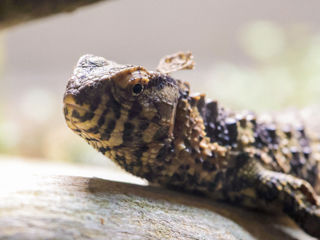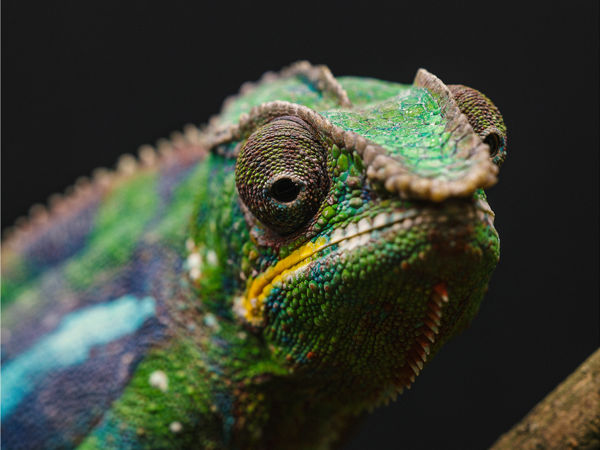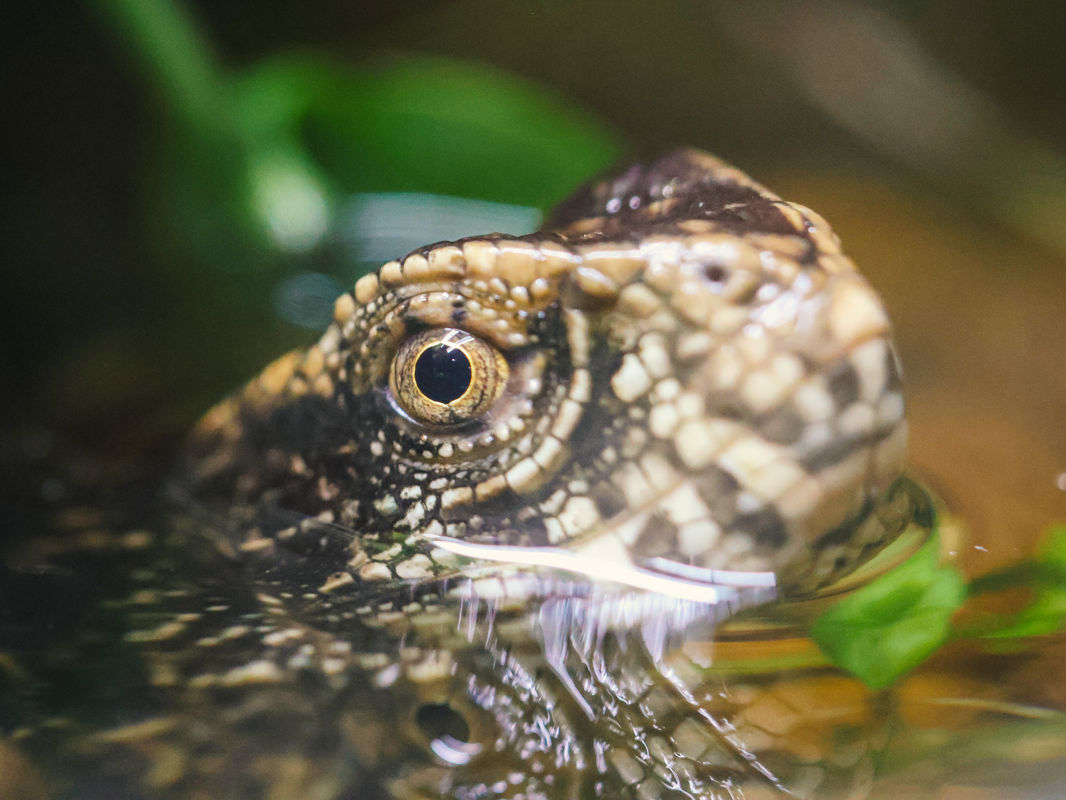Chinese crocodile lizard
Key facts
Scientific name: Shinisaurus crocodilurus
Range: Southeastern China and Northern Vietnam
Habitat: Subtropical forests bordering freshwater ponds and slow-moving streams
Diet: Invertebrates (insects, snails, tadpoles)
Average size: 8-16 inches
Life span: 10 in captivity, unknown in the wild
IUCN Red List: Endangered
Chinese crocodile lizards are Endangered semi-aquatic reptiles with fragmented (separated) populations throughout southeastern China and northern Vietnam. This species is so named because of the bumpy and sometimes ridged appearance of their scales, which resembles that of a crocodilian

WHAT'S SPECIAL ABOUT CHINESE CROCODILE LIZARDS?
Chinese crocodile lizards are the last species to exist from both their genus and their family (Shinisauridae). Fossil records indicate this family can be traced back to more than 100 million years ago (that’s approximately 40 million years prior to the extinction of the dinosaurs), meaning this species is extremely important in understanding of reptile origin, adaptation and evolution
The colouration of Chinese crocodile lizards can convey several things from one individual to another. For example, it’s thought that certain red hues can indicate the age, life history and even bite force of an individual
Unlike most reptiles who lay eggs, Chinese crocodile lizards are viviparous (they give birth to live young – up to 12 at a time)

DID YOU KNOW?
Chinese crocodile lizard young are precocial, meaning they are immediately independent after they’re born and can feed and care for themselves with no help from their parents
This species have been known to enter into a motionless state, sometimes for several hours at a time. As ectotherms (animals that rely on the temperature of their surroundings to maintain their body temperature), this behaviour may allow them to conserve their energy, particularly if their surroundings get cooler. As a result, indigenous people have named this reptile “the lizard of great sleepiness”
Chinese crocodile lizards are excellent swimmers and use their powerful tails to their advantage when propelling themselves in the opposite direction away from threats. By remaining underwater for long periods of time, they’re able to hide from their predators and hunt their prey
Chinese crocodile lizards are Endangered according to the IUCN Red List, meaning they are at substantial risk of extinction. Within a 40-year period, their population has declined by more than 80% . This is due to:
Habitat loss: Chinese crocodile lizards are threatened by habitat loss because of deforestation. As a semi-aquatic species, logging affects the availability of terrestrial (land-based) habitats by removing important trees that provide perch sites and maintain water content within the area, which then contributes to the drying of nearby aquatic habitats like ponds and streams
Poaching: Despite some of this species’ habitat existing across three Chinese nature reserves, poaching (the illegal hunting of animals) still occurs, which reduces wild population numbers and makes it hard for the species to recover in a way that is healthy for the overall population. This poaching is sometimes driven by demand from the pet trade and wild-caught Chinese crocodile lizards are often traded illegally which further damages their wild population
Fishing practices: Electro-fishing (the practice of fishing using electrical currents) and the use of poisonous chemicals to fish within Chinese crocodile lizard habitats is damaging to their populations as these practices can kill them in the process
-
![362277039 664600909026309 8369226469419348221 N]()
WHAT WE'RE DOING...
Endangered species care: Our dedicated team of Animal Keepers provide this reptile with the precise care that they need, alongside many other zoos across Europe, which contributes to the overall safeguarding and protection of this Endangered species
Education: Our designated Conservation Education team are on hand to discuss Chinese crocodile lizards with our guests, raising awareness for the threats that they face and how they can be conserved
-
![Crocodile Lizard]()
HOW YOU CAN HELP?
When buying animals to care for, ensure you’re not supporting the purchase of illegally sourced animals by thoroughly researching the species before you buy them. Animals should only be acquired from a reputable seller who can demonstrate the correct documentation to their buyers. This will help to conserve Chinese crocodile lizards and ensure stable in-situ (wild) population numbers.



